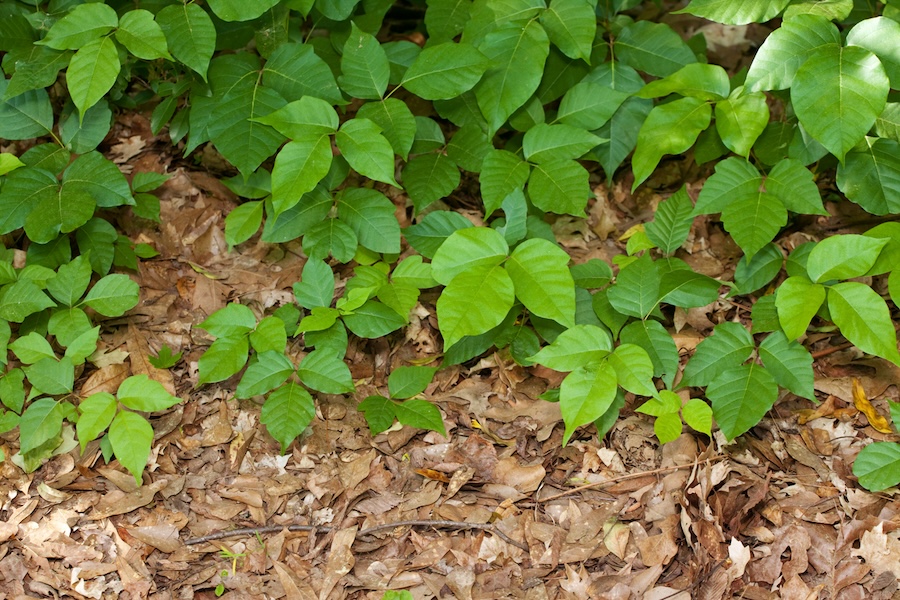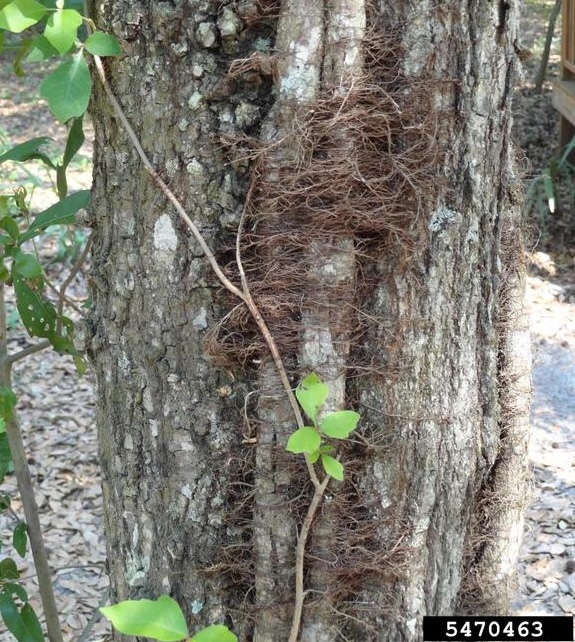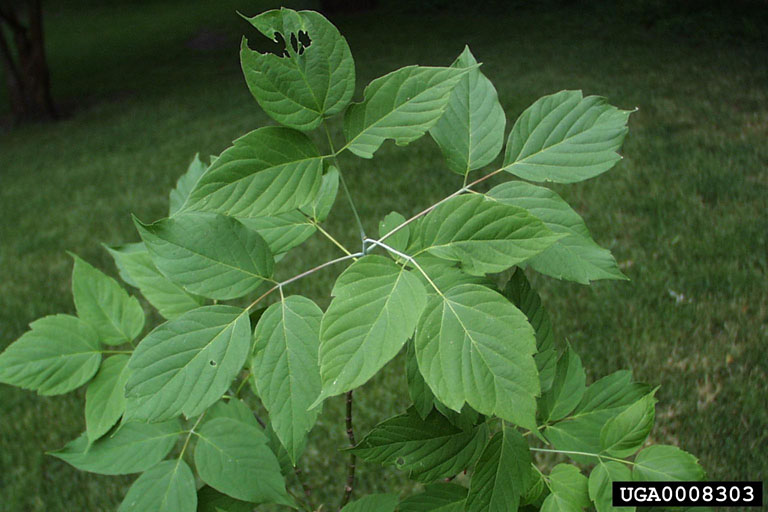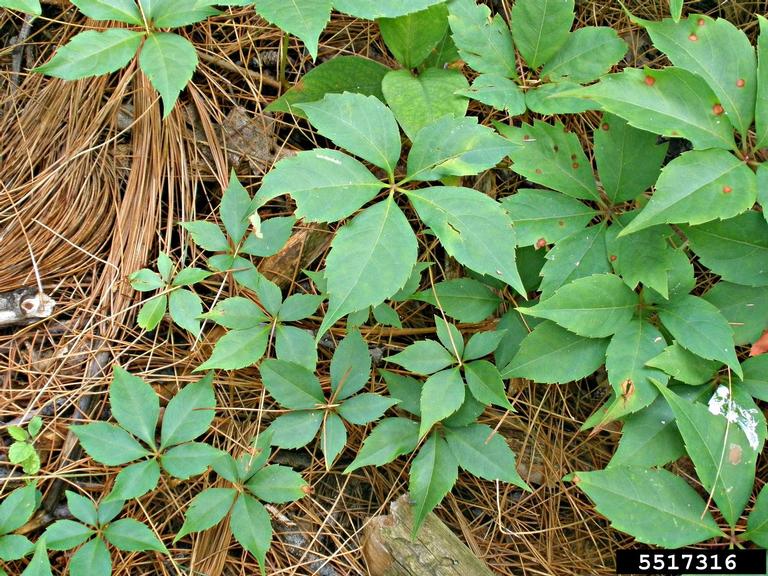
If you spend time outdoors, you’ve probably come across the persistent and noxious plant known as poison ivy. It is infamous for causing allergic reactions in up to 50 million Americans annually, according to the American Skin Association. To manage it effectively and safely, it’s important to understand its traits and use the right control methods to deal with this troublesome plant.
In his University of Georgia Cooperative Extension publication, “Controlling Poison Ivy in the Landscape,” College of Agricultural and Environmental Sciences horticulturist Mark Czarnota provides helpful tips to distinguish poison ivy from common look-alikes and shares several management options for controlling the irritating plant around the home.
Poisonous principles
Poison ivy (Toxicodendron radicans) is a common poisonous plant in Georgia. It thrives in moist, deciduous forests and wooded areas but is also found in various agricultural and residential landscapes.
Atlantic poison oak (Toxicodendron pubescens), a related species, inhabits similar habitats. The American Medical Association estimates that poison ivy and Pacific poison oak (Toxicodendron diversilobum) cause more cases of contact dermatitis in the U.S. than all other plants and household and industrial chemicals combined.
All parts of poison ivy are poisonous year-round. The oily compound urushiol, found in specialized resin ducts, is toxic. It is quickly released if the plant is damaged. People are commonly exposed as they brush against the plant and bruise the leaves. Exposure also occurs when people come in contact with the toxin by touching equipment, clothing or animals that have been in contact with poison ivy. Dogs and cats, for example, often transfer the toxin to people.
Symptoms of contact with poison ivy include skin inflammation, rash, itching and blistering. It’s important not to burn poison ivy, as the toxin can be carried on soot particles in smoke and cause severe allergic reactions if inhaled.
Anyone working outdoors or participating in activities like hiking and camping should first learn to identify poison ivy to avoid allergic reactions. Residents can use various management techniques to reduce the presence of poison ivy in their landscapes.
Distinguishing poison ivy from common look-alikes
Poison ivy is a woody perennial belonging to the cashew (Anacardiaceae) family. It may grow as a small shrub or a high-climbing vine with aerial rootlets on trees, fence rows and buildings. In contrast, poison oak usually grows as a small shrub. Poison ivy reproduces by creeping roots and seeds. Leafy shoots can grow from the creeping roots several yards away from the parent plant.
Poison ivy leaves are alternately arranged on the stem, with each compound leaf consisting of three bright green, shiny leaflets. The leaflets are elliptic to egg-shaped with smooth, toothed or lobed margins. The upper leaf surface is smooth, while hairs are commonly found on the veins of the underside.
The shape and texture of poison ivy leaves can vary significantly, making them easy to misidentify. The saying “leaves of three, let it be” helps avoid confusion. While this approach may lead to unwarranted suspicion of non-toxic plants, it is important to consider sensitivity to poison ivy.
Box elder (Acer negundo) is a plant found in Georgia that is often confused with poison ivy. Box elder seedlings have a leaf with three leaflets that resemble poison ivy. The most distinguishing difference is that box elder leaves are oppositely arranged on the stem, while poison ivy has alternate leaves. Virginia creeper (Parthenocissus quinquefolia), a vining plant similar in growth habit and appearance, may also be confused with poison ivy. The difference is that Virginia creeper has compound, palmate leaves with five leaflets. Occasionally, Virginia creeper plants have three to seven leaflets.
Poison ivy flowers are small, with five yellowish-green petals arranged on slender stalks. The fruit is grayish-white, nearly round, about 1/5 of an inch in diameter and containing a single seed. More than 55 bird species are known to consume poison ivy fruits.



Managing poison ivy in the landscape
Poison ivy will not tolerate repeated tillage, cutting or mowing. Continually clipping the plant at or near ground level during the year for several years will eventually control poison ivy. Poison ivy shoots commonly encroach from wooded areas into newly established lawns. To prevent the spread of poison ivy into the lawn, start by controlling the plant in any adjacent wooded areas.
Digging or “grubbing out” poison ivy plants and roots can be used as a control method in small beds of landscape ornamentals. To prevent contact with the poison, waterproof gloves should always be worn when handling poison ivy plants, including the roots.
Using herbicides
Numerous herbicides are available for controlling poison ivy. Follow label directions carefully. Due to the plant’s extensive root system, multiple applications are usually necessary, and repeat applications should be made at the full-leaf stage of growth.
Here are three chemical options:
- Glyphosate: Glyphosate is the active ingredient in several common herbicide products found in retail stores. The best control is achieved when glyphosate is applied directly to poison ivy foliage on a warm, sunny day when plants are actively growing. Glyphosate requires a one-hour rain-free period and can be used along fence rows, as a spot treatment in turfgrasses and pastures, and as a directed treatment in ornamentals and fruit and nut trees. It should not be used on windy days to avoid injuring other plants.
- 2,4-D: Often sold in mixtures, 2,4-D is only marginally effective when used alone. 2,4-D and 2,4-D mixtures will not injure most turfgrasses and other grasses, but numerous broadleaf plants, like ornamentals, fruit trees, muscadines and many vegetables are highly sensitive to 2,4-D. Spray drift can severely injure these plants.
- Triclopyr: While mostly used in commercial agriculture and forestry, some trade names are available at retail stores. Triclopyr should be applied to poison ivy at the full leaf growth stage on a warm, sunny day. This product is recommended for use around homes, fences and in non-garden areas. It can be used near ornamentals, but do not spray in windy conditions as droplets can drift to susceptible plants.
When applying herbicide, always follow the specific guidelines on the label and take necessary precautions to minimize drift to avoid damage to non-target plants.
First aid
Sensitivity to poison ivy varies among individuals. Symptoms usually appear 12 to 48 hours after contact but may take several days to develop. If contact is suspected, immediately wash the skin with soap and cold water and wash clothes with detergent to prevent further exposure. Make sure to bathe pets that may have come into contact with poison ivy, as the oil can remain on their fur and spread to humans or other surfaces they touch. Only the oily toxin can spread the rash. The fluid contained in blisters is non-allergenic.
Several products on the market, like Tecnu, Ivy-Block, and Ivy-X, can prevent or reduce the formation of allergic reactions if used immediately after suspected exposure. Numerous topical ointments and lotions are also available for treating poison ivy symptoms. A physician or pharmacist should be consulted for the appropriate treatment.
To learn more about identifying and managing poison ivy and other troublesome weeds commonly found in home landscapes, refer to the “Weed Wizard” series from UGA Extension.



